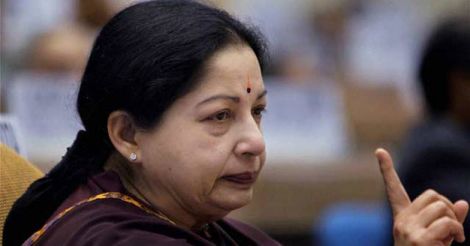In the Tamil Nadu Assembly, even the speaker of the House used to address Jayalalithaa as ‘Puratchi Thalaivi Amma’, a nickname given by her ardent supporters. Incidentally, the speaker once ruled that legislators cannot refer to the chief minister by her name!
Her loyal supports always came up with new adjectives to show their unflinching devotion to their beloved leader. Party leaders were often seen bowing in front of her and falling at her feet. Her devoted followers were known for unparalleled levels of dedication. She always acknowledged their gestures with a smile, the same huge smile she wore while facing intense and protracted struggle to survive and thrive during her three-decade-long political life.
Jaya controlled the government and the party with her iron fists. She reshuffled her cabinet and sacked ministers at will. There were no routine cabinet meetings during her reign. All that her cabinet colleagues did was just taking orders from her. No ministers dared to take decisions on matters pertaining to their portfolios. Each and every announcement and statement was made suo motu by Jaya at the assembly under Rule 110 of the House. Her decisions were always greeted with a round of applause by her party men.
As far as AIADMK leaders were concerned, a ministerial post was a gift to them from their benevolent leader. For that very reason they never complained when they were striped of the post. During the 2011-16 period, Jaya reshuffled her cabinet for a record 35 times. In the process, many lost their job, while many others were reinstated.
She controlled her party too in a similar manner. Leaders were wary of the fact that there was no guarantee for their place in the party. She took over the position of AIADMK general secretary in 1989 and continued at the helm till her death. Whenever the election to the AIADMK general secretary post was held, hundreds of nominations were filed; all proposing one name for the top post, that of Jayalalithaa!
Usually, the AIADMK would release the list of candidates immediately before or after declaring the internal elections. However, no one can assure themselves of a post just by filing nomination, or, even after figuring in the list of candidates. Without citing any reason, their names could be struck off the list. Once even a nominee for the party’s Rajya Sabha seat had such an experience.
In the 2014 Lok Sabha elections, AIADMK won 37 of the total 39 seats in the State. Yet, many heads rolled in the party while certain ministers lost their job. The reason was that the AIADMK’s vote share shrank in assembly segments represented by them!
Though O. Panneerselvam was appointed as the ‘caretaker chief minister’ when Jaya stepped down after being convicted in the disproportionate asset case, the party workers including himself and the people of Tamil Nadu saw it as a technical requirement and continued to regard Jaya as their ruler.
After assuming office, Panneerselvam did not sign any file at the Secretariat or announced a single new scheme. Foundation stones for various projects installed during Jayalalithaa’s reign bore only her name. All the projects were inaugurated by herself, that too via video conferencing sitting in her chamber at the Secretariat.
Nevertheless, Jaya could create a loyal support base within the party as well as the bureaucracy. She used to receive specific intelligence inputs regarding even the simplest issues at the lower level party bodies. Based on the information, she used to initiate stringent action against the erring party men.
For students of political science, Jayalalithaa’s life is a perfect study material to learn how a female leader from a humble background emerged as one of the top leaders of the country fighting all odds.
























